List of OceansWhen it comes to the earth's surface cover, most of it is covered by water. Water covers over 70% of the earth's surface, the vast majority of which is covered by the seas. The ocean salty waters cover more than 96 percent of the total water surface on Earth. The oceans are enormous bodies of water that surround the continents. Despite the fact that they are all interconnected, they are primarily divided into five oceans: the Atlantic Ocean, Pacific Ocean, Indian Ocean, Antarctic Ocean, and the Arctic Ocean. Each of these seas is special in its own way. 1. The Arctic OceanIt is the smallest ocean in the world. The Arctic Ocean is surrounded by many seas like East Siberian, The Chukchi, Kara, Barents, and Greenland. Five coastal landmarks surround the ocean; Denmark, Canada, Norway, the US, and Russia. The Arctic is constantly responding negatively to the changing climate conditions. The main impact of the increasing ozone effect results in severe alterations in the oceanic thermohaline circulations which are in turn responsible for initiating the climate changes. 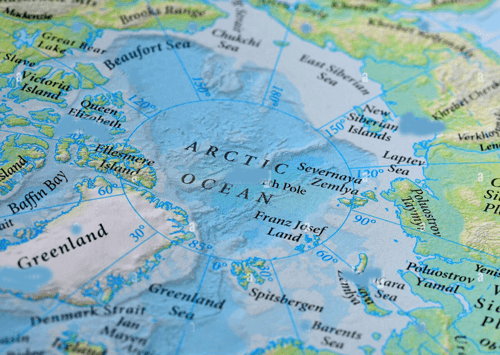
The Arctic Ocean was discovered by Fridtjof Nansen in the 19th century. But it wasn't until the mid of 20th century that it was recognized as an ocean. Earlier people use to believe that it is just a single large basin. It was 1950's explorations that revealed the ocean floor's nature. It was found that the Arctic Ocean is not just a large basin; rather it has two deep basins which are further divided into 4 smaller basins. The second smallest ocean is the Indian Ocean; the Arctic Ocean is one-sixth the area of the Indian Ocean. Although it is a small ocean, it has so many unique features like the covering of perennial ice and this ocean is almost completely surrounded by coastal lands. The ocean also has a history of different Greek speculations and theories. One very wide view is that the ocean's southern and northern Polar Regions are just a wasteland, that is, the land is completely uninhabited. While the other view has a strong belief that beyond the north wind there is a land called halcyon where the sun always shone bright and people of that land live in peace. The people of that land are called hyperboreans. Although these are just speculations, it has given enough motivation to the adventurous people to go and explore the land, despite the fear of unknown and severe climatic conditions. The Arctic Ocean is very crucial to us and this world. Its importance is not just limited to its role in providing a home to polar bears but it is also a regulator of climate change. The arctic maintain the world's climate balance by regulating the ocean currents around the globe. 2. The Southern OceanThe southern ocean was formerly known as the Antarctic Ocean. The southern ocean is a new name given to an ocean extending from a 60-degree southern latitude line to the coast of Antarctica. The name was recognized by the 'US Board on geographic names'. It is the latest defined ocean accepted by IHO (international hydrographic organization) in 2000. 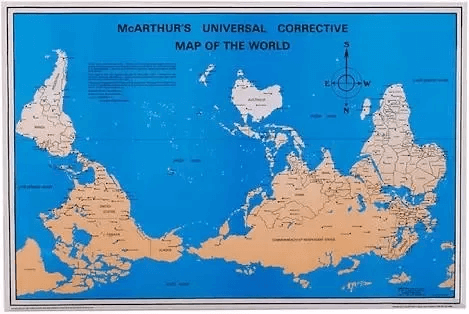
The ocean circles the Antarctic land and includes several seas like - the Bellingshausen Sea, Ross Sea, Scotia Sea, and the Amundsen Sea. The total area covered by the ocean is 20,327,000 km2. The climate of the ocean ranges from -2 to 10 degrees Celsius. Very strong winds are found at the 40-degree latitude, south of the Antarctic Circle. These winds are the strongest of all winds found on the earth's surface. The common feature of this ocean is the presence of icebergs which can be found at any point in time throughout the ocean. The size of icebergs ranges from smaller to several hundred meters high. The sea ice has an average thickness of 0.5m to 1m. Due to the changing climate, the Antarctic Ocean is facing the worst impact. Increased solar radiation (including UV) has a drastic impact on its primary products such as phytoplankton. 3. The Indian OceanThe world's third-largest ocean is the Indian Ocean which covers almost 20 percent of the earth's surface. In size, it is around 5.5 times the size of the United States. Its width lies between east coast Africa and West Australia measuring up to 1000-620 miles. 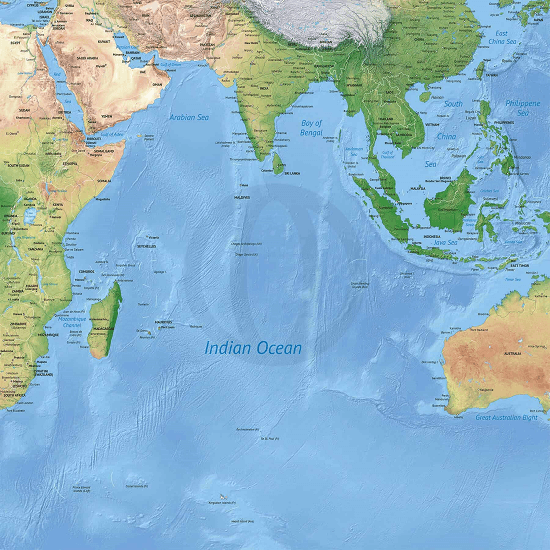
So many Islands are situated in the Indian Ocean, some of them are - Reunion (France), Madagascar, Mauritius, Maldives, and Sri Lanka. The ocean got its name due to its location in Indian Peninsula. It has a very dynamic temperature which mainly depends upon the ocean's currents. The water is warm near the equator such that around 28 degrees Celsius is reached. The southern region of the ocean which is near the Polar Regions has a low temperature. 4. The Atlantic OceanIt is the 2nd largest of all the oceans of the earth, covering 20 percent of the earth's Surface area. According to the European point of view, the Atlantic Ocean is known to Separate the new world (America) from the old world (Africa, Europe, and Asia). Its average depth is 3646 meters and covers 106,460,000 km2. 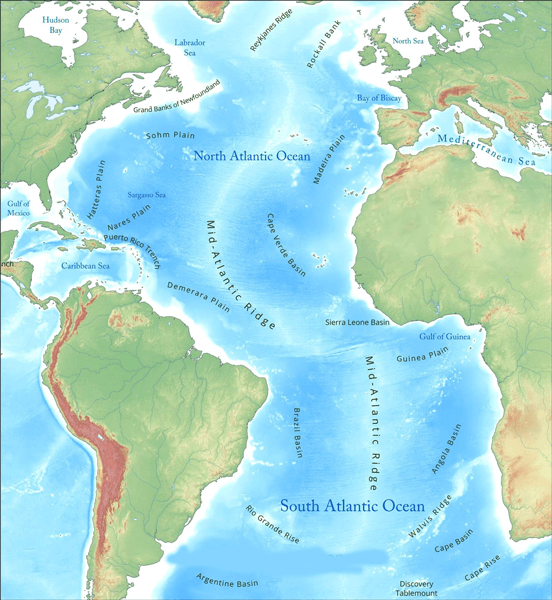
An S-shaped longitudinal basin is occupied by the Atlantic Ocean which extends between America from the West and Africa and Europe from the East. All oceans are connected forming a world ocean. In this way the Atlantic Ocean is connected to the Antarctic Ocean from the north, the Pacific Ocean from the south-west, The Southern Ocean from the South, and the Indian Ocean from the South-east. It has lots of references in Greek mythology. According to one of the ancient Greek mythological literature, the Atlantic Ocean is known as Oceanus. Oceanus means a giant river which is encircling the entire world. Similarly, the ancient Ethiopian literature called its southern side as Aethiopian Ocean and the Great Western Ocean by English cartographers. Its limits has been devised in 1953 by International Hydrographic Organizations. But these limits are not very strict and are revised from time to time. The coastal lands surrounding the ocean are North and South America which is to the west, Europe and Africa to the East, and Antarctica to the South. The boundaries are not very definite and they represent a very irregular coast due to the presence of various gulfs, bays, and seas. Climate change is responsible for the increased sea surface temperature which is showing an increase in North Atlantic Hurricane activity. Furthermore, global warming is continuously causing a rise in sea levels and the melting of glaciers. 5. The Pacific OceanIt is the largest ocean of all five oceans. Its northern boundary connects it to The Arctic Ocean and the southern ocean to the south side. The west of the Pacific Ocean is bounded by the land of Australian and Asian continents and the eastern side of the ocean is bounded by American land. It is the largest ocean covering approximately 165,250,000 sq km of area and has an average depth of 4,280m. It is responsible for covering 32 percent of the earth's total surface area and 46 percent water area. 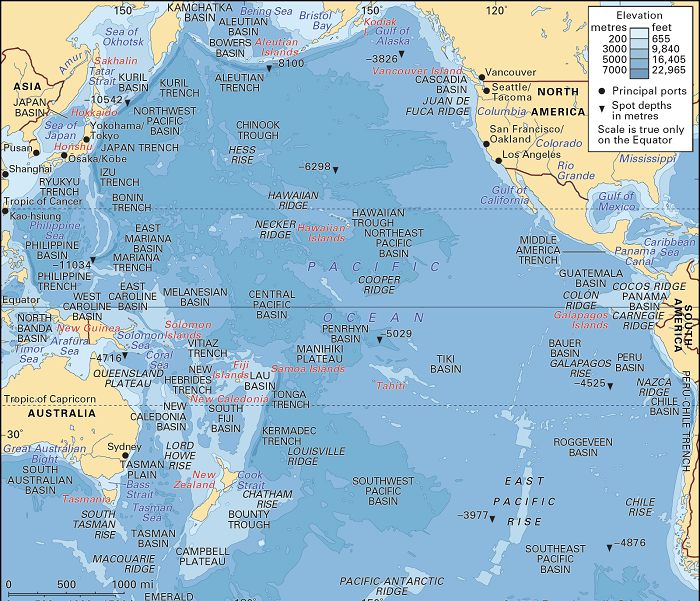
The ocean is subdivided into two large divisions - the North and South Pacific oceans. These are two large independent volumes of water made by oceanic circulations. Both North and South Pacific Oceans meet at the equator. The deepest point in the northern hemisphere called horizontal deep has a depth of 10,823m is a part of the Pacific Ocean. The eastern side of the Pacific Ocean was discovered first by Vasco Nunez de Balboa. He was a Spanish explorer who first sighted the ocean while crossing the Isthmus of Panama. Its name was coined by Portuguese explorer Ferdinand Magellan in 1521. He called it Mar Pacifico which means a peaceful sea in the Portuguese language. The Pacific Ocean is shrinking from its three sides by 1 inch due to plate tectonic effects and the Arctic Ocean is increasing in size for the same reason. It harbors the largest number of islands among other oceans that is 25000 islands. Micronesia, Polynesia, and Melanesia are the three main groups of the Pacific Ocean's island division. The major environmental concern is the floating small plastic fragments in its northeastern side which are drastically rising at an alarming rate. The ocean also suffers from marine pollution which is the result of the entry of chemicals and waste deposited in the river which drains into the ocean. Another problem is the accumulation of ocean debris, human-created waste. The debris, chemicals, and plastic waste are all responsible for depleting the oxygen content of water and consequently harming the animals living in the ocean.
Next TopicList of Organs in the Human Body
|
 For Videos Join Our Youtube Channel: Join Now
For Videos Join Our Youtube Channel: Join Now
Feedback
- Send your Feedback to [email protected]
Help Others, Please Share










